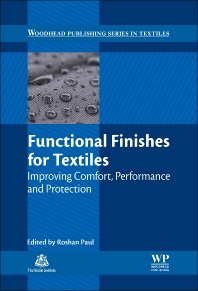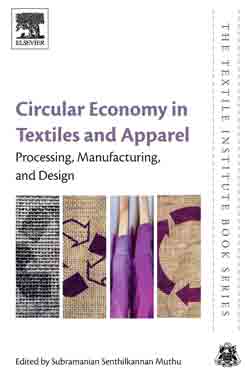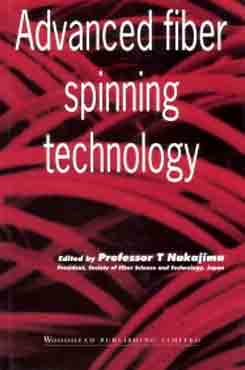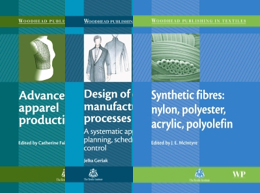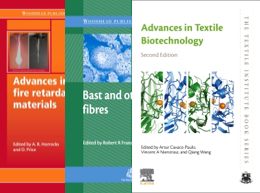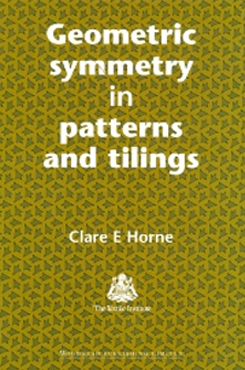Description
Functional finishes for textiles reviews the most important fabric finishes in the textile industry. It discusses finishes designed to improve the comfort and other properties of fabrics, as well as finishes which protect the fabric or the wearer. Each chapter reviews the role of a finish, the mechanisms and chemistry behind the finish, types of finish and their methods of application, application to particular textiles, testing and future trends.
Key Features
- Describes finishes to improve comfort, performance, and protection of fabric or the wearer
- Examines the mechanisms and chemistry behind different types of finishes and their methods of application, testing and future trends
- Considers environmental issues concerning functional finishes
Readership
R&D managers in the textile industry and academic researchers in the area of textiles
Table of Contents
- 1: Functional finishes for textiles: an overview
- 1.1 Introduction
- 1.2 Types of functional finishes
- 1.3 Finishes for improving comfort and performance
- 1.4 Finishes for protecting wearers and textiles
- 1.5 Future trends and challenges
- 1.6 Conclusion
Part One: Improving comfort and performance
2: Thermal regulation finishes for textiles
- 2.1 Introduction
- 2.2 Mechanisms of thermal regulation in textiles
- 2.3 Phase change materials (PCMs) for thermal regulation
- 2.4 Storage of PCMs for thermal regulation
- 2.5 Supercooling and thermal conductivity
- 2.6 Application of PCMs and PCM based products to textiles
- 2.7 Testing the effectiveness of finishes
- 2.8 Market profile and commercial application areas
- 2.9 Future trends and challenges
- 2.10 Conclusion
3: Moisture management and soil release finishes for textiles
- 3.1 Introduction
- 3.2 Mechanisms of moisture management and soil release
- 3.3 Chemistry and application methods
- 3.4 Testing the effectiveness of finishes
- 3.5 Future trends and challenges
- 3.6 Conclusion
- References
4: Softening finishes for textiles and clothing
- 4.1 Introduction
- 4.2 Mechanisms of softening
- 4.3 Types of softeners and methods of application
- 4.4 Recent advances in softening finishes
- 4.5 Application of softening finishes on textiles
- 4.6 Evaluation of softening finishes
- 4.7 Future trends and challenges
- 4.8 Conclusion
- References
5: Enzymatic biofinishes for synthetic textiles
- 5.1 Introduction
- 5.2 Enzymatic biofinishing of polyester fibres
- 5.3 Enzymatic biofinishing of polyamide fibres
- 5.4 Enzymatic biofinishing of acrylic fibres
- 5.5 Future trends
- 5.6 Conclusion
- 5.8 Acknowledgements
- References
6: Commercial shrink-resist finishes for wool
- 6.1 Introduction
- 6.2 Dimensional stability of wool products
- 6.3 Continuous felt-resist treatment of wool
- 6.4 Batchwise felt-resist treatment of wool
- 6.5 Quality assurance and accreditation of felt-resist processes
- 6.6 Blending wool with other fibres
- 6.7 Future trends
- 6.8 Conclusion
- References
7: Easy care finishes for textiles
- 7.1 Introduction
- 7.2 Formaldehyde based crosslinking agents
- 7.3 Low formaldehyde crosslinking agents
- 7.4 Formaldehyde free crosslinking agents
- 7.5 Applications of easy care finishes
- 7.6 Methods to determine easy care behaviour
- 7.7 Health, safety and environmental aspects
- 7.8 Future trends
- 7.9 Conclusion
- References
8: Self cleaning finishes for textiles
- 8.1 Introduction
- 8.2 Superhydrophobicity and self cleaning
- 8.3 Superhydrophobic structures in nature
- 8.4 Creating superhydrophobic surfaces on textiles
- 8.5 Challenges in the development of superhydrophobic surfaces
- 8.6 Non-textile applications of superhydrophobic surfaces
- 8.7 Photocatalysis using TiO2 for self cleaning
- 8.8 TiO2 based self cleaning treatments for textiles
- 8.9 TiO2 photocatalysis versus superhydrophobicity
- 8.10 Future trends
- 8.11 Conclusion
9: Superabsorbent finishes for textiles
- 9.1 Introduction
- 9.2 Types of superabsorbent finishes and methods of application
- 9.3 Superabsorbency mechanisms
- 9.4 End uses and technical applications
- 9.5 Testing the effectiveness of superabsorbent finishes
- 9.6 Future trends and challenges
- 9.7 Conclusion
- 9.8 Sources of further information and advice
- References
10: Medical, cosmetic and odour resistant finishes for textiles
- 10.1 Introduction
- 10.2 Different techniques for functionalising textiles
- 10.3 Advantages and disadvantages of different technologies
- 10.4 Applications of medical textiles
- 10.5 Applications of cosmetotextiles
- 10.6 Applications of odour resistant textiles
- 10.7 Performance analysis and safety aspects
- 10.8 Future trends
- 10.9 Conclusion
- References
Part Two: Protecting wearers and textiles
11: Insect repellent finishes for textiles
- 11.1 Introduction
- 11.2 Mechanisms of repellent action
- 11.3 Types of insect repellent finishes
- 11.4 Development of insect repellent textiles
- 11.5 Testing the effectiveness of finishes
- 11.6 Future trends and challenges
- 11.7 Conclusion
- References
12: Antimicrobial finishes for textiles
- 12.1 Introduction
- 12.2 Types of antimicrobial finishes
- 12.3 Methods of application
- 12.4 Mechanism of antimicrobial finishes
- 12.5 Evaluation of antimicrobial finishing
- 12.6 Troubleshooting for antimicrobial finishes
- 12.7 Future trends and challenges
- 12.8 Conclusion
- 12.9 Sources of further information and advice
- References
13: Hydrophobic and oleophobic finishes for textiles
- 13.1 Introduction
- 13.2 Mechanism and chemistry of hydrophobic and oleophobic surfaces
- 13.3 Hydrophobic and oleophobic textiles
- 13.4 Overview of testing methods
- 13.5 Future trends and challenges
- 13.6 Conclusion
- 13.7 Acknowledgements
- References
14: Flame retardant finishes for textiles
- 14.1 Introduction
- 14.2 Mode of action of flame retardants
- 14.3 Developments in flame retardant chemicals
- 14.4 Flame retardant treatments
- 14.5 Applications of flame retardant textiles
- 14.6 Assessing the flame retardancy of textiles
- 14.7 Regulations for coated textiles
- 14.8 Future trends and challenges
- 14.9 Conclusion
- References
15: Ultraviolet protection finishes for textiles
- 15.1 Introduction
- 15.2 Mechanisms of UV protection
- 15.3 Chemistry and mechanisms of UV protection finishes
- 15.4 UV protection finishing for various textile structures
- 15.5 Nanotechnology based UV protection finishing
- 15.6 Test methods for efficacy of UV protection finishes
- 15.7 Future trends and challenges
- 15.8 Conclusion
- References
16: Radiation protection finishes for textiles
- 16.1 Introduction
- 16.2 Electromagnetic radiation: exposure sources and effects
- 16.3 Shielding mechanism and evaluation of radiation protection
- 16.4 Types of finishes for ionizing radiation shielding
- 16.5 Types of finishes for non-ionizing radiation shielding
- 16.6 Textile finishing durability
- 16.7 Future trends and challenges
- 16.8 Conclusion
- 16.9 Acknowledgements
- References
17: Antistatic and electrically conductive finishes for textiles
- 17.1 Introduction
- 17.2 Electrostatic phenomena
- 17.3 Electrical resistivity and conductivity
- 17.4 Theory of electrostatic charge
- 17.5 Mechanisms of charge dissipation on insulating surfaces
- 17.6 Effect of static charge
- 17.7 Electrostatic measurement methods
- 17.8 Static control in textile fibres
- 17.9 Antistatic finishing agents and finishes
- 17.10 Applications of antistatic and electrically conductive textiles
- 17.11 Future trends and challenges
- 17.12 Conclusion
- 17.13 Sources of further information and advice
18: Biological and chemical protective finishes for textiles
- 18.1 Introduction
- 18.2 Mechanisms and chemistry of protective finishes
- 18.3 Types of finishes and application methods
- 18.4 Challenges involved in textile application
- 18.5 Testing the safety and effectiveness of finishes
- 18.6 Future trends and challenges
- 18.7 Conclusion
- References
19: Ballistic and impact protection finishes for textiles
- 19.1 Introduction
- 19.2 Mechanisms of protection
- 19.3 Types of protective finishes
- 19.4 Application of protective finishes and the challenges
- 19.5 Testing the effectiveness of finishes
- 19.6 Future trends and challenges
- 19.7 Conclusion
- References
20: Environmental and safety issues regarding functional finishes
- 20.1 Introduction
- 20.2 Legal demands
- 20.3 Requirements for cosmetotextiles
- 20.4 Requirements related to nanotechnologies
- 20.5 Demands from consumers: ecolabels
- 20.6 Improving the environmental profile
- 20.7 Conclusion
- 20.8 Sources of further information and advice
- References



